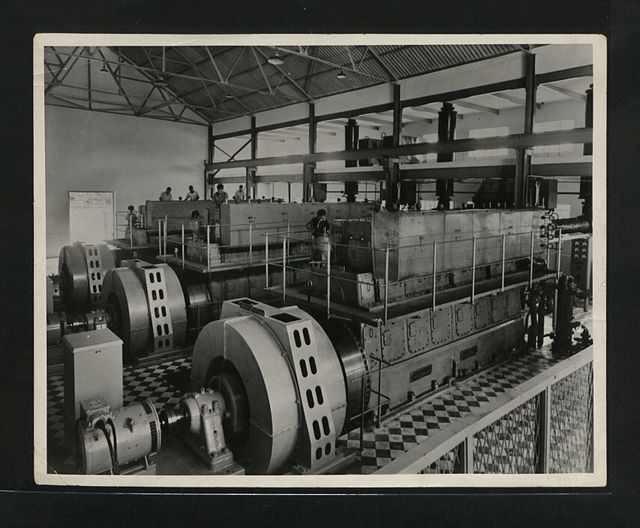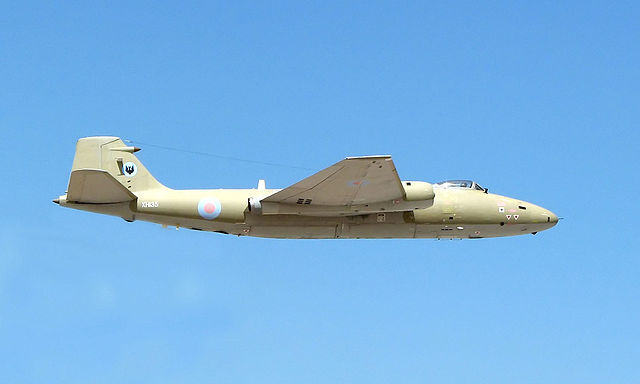The English Electric Company Limited (EE) was a British industrial manufacturer formed after the armistice ending the fighting of World War I by amalgamating five businesses which, during the war, had been making munitions, armaments and aeroplanes.
Locomotiva 1449 [English Electric • Sorefame] N.º UIC: 9094 110 1449-3 (Takargo Rail)
Three English Electric 7SRL Diesel alternator sets being installed the Saateni Power Station, Zanzibar 1955
Two Hampden bombers pictured on 9 April 1940
Napier Deltic engine, cut away for display
English Electric Canberra
The English Electric Canberra is a British first-generation, jet-powered medium bomber. It was developed by English Electric during the mid- to late 1940s in response to a 1944 Air Ministry requirement for a successor to the wartime de Havilland Mosquito fast bomber. Among the performance requirements for the type was an outstanding high-altitude bombing capability and high speed. These were partly accomplished by making use of newly developed jet-propulsion technology. When the Canberra was introduced to service with the Royal Air Force (RAF), the type's first operator, in May 1951, it became the service's first jet-powered bomber.
English Electric Canberra
Canberra PR.9 XH135
The first Canberra B.2 prototype, VX165
Martin EB-57B

![Locomotiva 1449 [English Electric • Sorefame] N.º UIC: 9094 110 1449-3 (Takargo Rail)](https://upload.wikimedia.org/wikipedia/commons/thumb/6/6e/Flickr_-_nmorao_-_Locomotiva_1449%2C_Poceir%C3%A3o%2C_2008.08.31_%281%29.jpg/640px-Flickr_-_nmorao_-_Locomotiva_1449%2C_Poceir%C3%A3o%2C_2008.08.31_%281%29.jpg)






